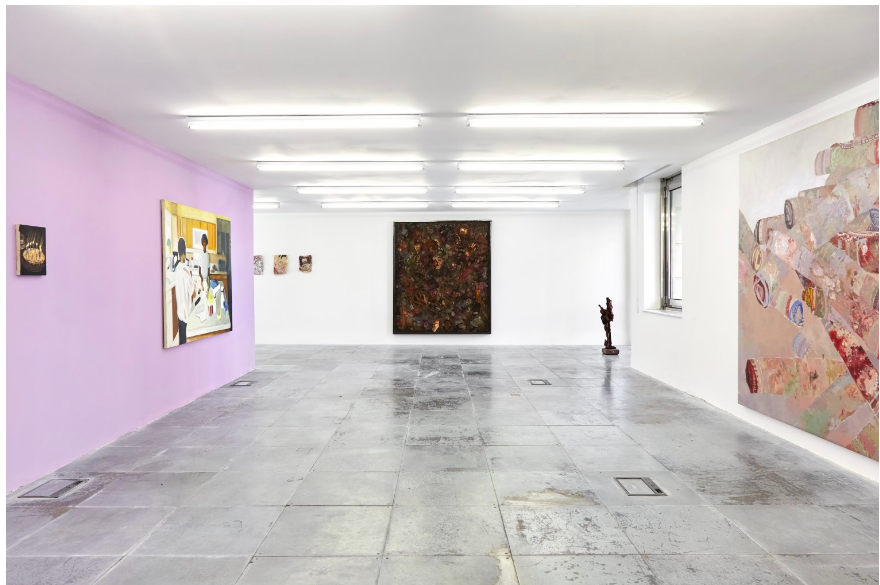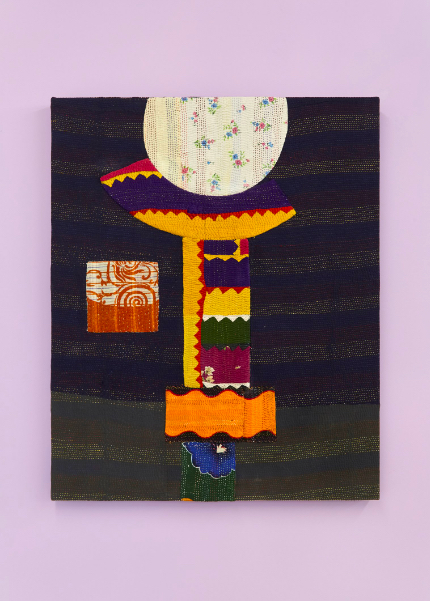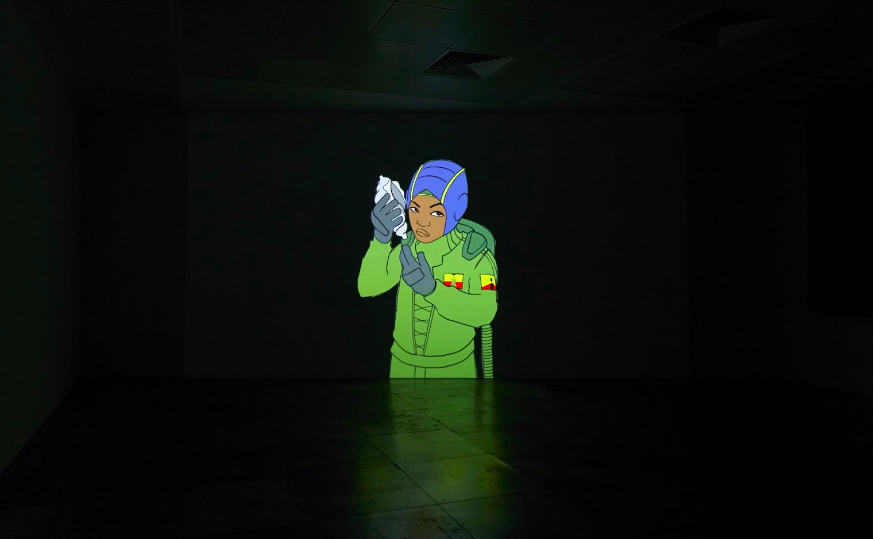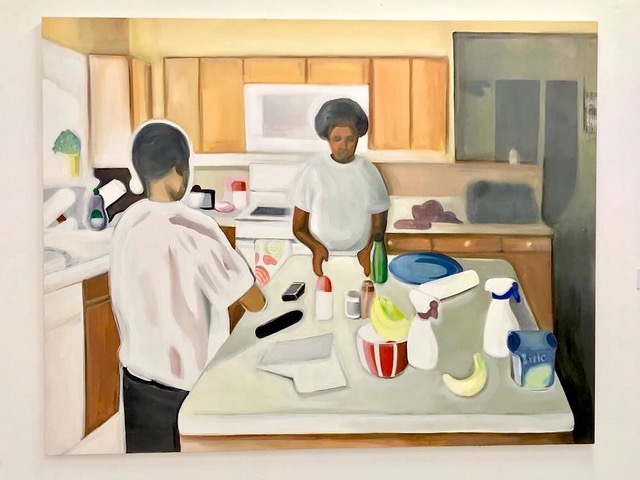
homeplace features: Larry Achiampong, Patty Chang, Shezad Dawood, Rhea Dillon, DeSe Escobar, Madelynn Green, Nadya Isabella, Athena Papadopoulos, Mohammed Sami, and Urara Tsuchiya
A home consists of windows and stairways, of rooms and the spaces between them. Alongside these physical components, a home is also comprised of the lives of its inhabitants: their joys, their fears, their desires. The roof and walls of a home offer its dwellers protection from the weather, but also from the perils of an external world shaped by patriarchy and white domination. In the home, out of the reach of these intersecting systems of power, is where all that truly matters in life takes place: the warmth and comfort of shelter, the feeding of bodies, the nurturing of souls*.

V.O Curations is pleased to present homeplace, an exhibition of work by ten artists that rereads the concept of private domesticity as both theory and philosophy. Curated by Kate Wong, the show takes its title from a 1996 essay by bell hooks in which the notion of ‘homeplace’ is understood as the making of a physical as well as a psychic community of resistance. If to resist means to oppose being invaded or destroyed by healing oneself2, then homeplace is the creation of a restorative space where those who have been dehumanised outside in the public world can regain ontological wholeness. Emerging through the conscious and heroic labour of black women within the colonised world of white supremacy, and no matter how fragile and tenuous it is, homeplace is vital to liberation struggle. To create and to sustain a place in which black people can affirm themselves despite oppressive socio-political conditions is not only an act of care but a radically subversive political gesture.

Employing the concept of homeplace as a framework through which to consider the disruptive potentials of domesticity, this exhibition untethers the lexicon of the home from its traditionally passive and feminised position. Tenderness and vulnerability become a form of resistance, and instances of slowness and so ness become a mode of refusal. In addition to the works by black women and women of colour in the show, homeplace seeks to reveal the o en hidden registers of private domestic life across a multiplicity of experiences. Where they overlap, these narratives form the basis for a shared political and cultural imaginary.

Installed in the main gallery, Korean-American artist Patty Chang’s two-channel film In Love (2001) shows Chang and each of her parents eating an onion. The films run backwards so that the artist appears to be crying while passionately kissing both her mother and father on each screen. This disturbing embrace is only revealed to be false when the evidence of an onion appears between them. In Love pairs feelings of longing and desire with conflicting trajectories of pain and loss. The work hints at the unspoken and often bitter feelings that can exist between a parent and child, while simultaneously alluding to the unconditional nature of familial bonds. In her 2018 painting, The Kitchen, American artist Madelynn Green hazily depicts her two siblings situated around a kitchen countertop laden with quotidian objects. The scene o ers a visual muteness that points toward the subtler and more quiet modes of refusal most o en ignored by mainstream political thought. In one corner of the gallery, Urara Tsuchiya’s sensitive and slightly perverse ceramic sculpture, max mon amour (2020) utilises the artist’s trademark playfulness to tell the story of an inter-species relationship between human and chimpanzee, disrupting traditional understandings of intimacy.

In the second floor project space, Larry Achiampong’s 2020 film Reliquary 2 is a meditation on a period of separation between the artist and his two children during the COVID-19 lockdown. Formed from animated sequences and drone footage that are overlaid with an original score and narration by the artist, the film speaks to the fragility of life, and especially of black life within the context of the pandemic. Achiampong’s film propels the concept of homeplace out of the feminine domain, demonstrating the strength and devotion of a father’s love.
Installed in the project space on the fifth floor, a new and never before seen immersive video essay by Rhea Dillon brings together poethic responses by eight of the artist’s friends and collaborators. The work ruminates on the world and colour, brown, asking: What does it mean to be a brown-skinned woman? What does it mean that this colour is consecutively voted the world’s least favourite colour? Who is brown and when do they land?

Rather than provide answers, the works in homeplace pose questions rooted within understandings of home and belonging. The diverse experiences of the ten artists in the show demonstrate private domestic life as a place of healing and as the basis for an interdependent form of refusal. The exhibition demonstrates that the home far exceeds its function as a physical dwelling place and that it serves critically as the foundation upon which to build a community of resistance.
Finally and most importantly, homeplace acknowledges the fact that it is black feminists who have provided us with so much of the language, the lived experience and the politics to fuel the kinds of imaginaries required to fight for the world we actually need.

homeplace featuring Larry Achiampong, Pa y Chang, Shezad Dawood, Rhea Dillon, DeSe Escobar, Madelynn Green, Nadya Isabella, Athena Papadopoulos, Mohammed Sami, and Urara Tsuchiya – 12th June 2021 V.O Curations (floors 1, 2 and 5), 56 Conduit Street, W1S 2YZ vocurations.com
A portion of proceeds from all sales will be donated to Herbal Mutual Aid Network, a grassroots organisation providing free plant-based care for Black people seeking support due to the ongoing crisis of racial violence and injustice (http://hman.love/).
About
Located in central London, V.O Curations is an arts organisation dedicated to supporting emerging and lesser represented artists, curators and researchers through an innovative and critically-engaged programme. Founded in 2018 by Zina Vieille and Nnamdi Obiekwe, V.O Curations believes that to curate is to approach all aspects of our programme – residencies, exhibitions, events, publications and studio spaces – with care.
V.O Curations promotes diverse voices and narratives across all of our activities and projects. Our programme aims to facilitate artistic exchange, socially-focused discourse, knowledge production and experimentation. We are focused on cultivating a sense of community, promoting collaboration and encouraging active learning rather than passive viewing.
Launching in January 2021 and spanning three floors at 56 Conduit Street, our new location in Mayfair is the site for V.O Residencies, a new gallery, an experimental project space and artist studios. This new location in central London reinforces our commitment to connecting emerging and underrepresented artists to wide-ranging and distinctive networks and resources.





